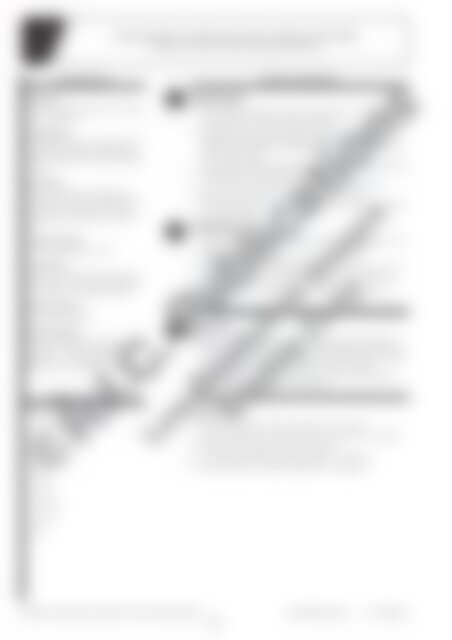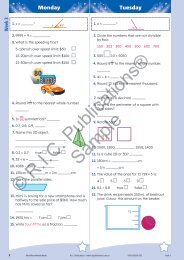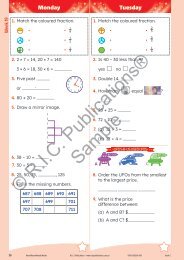20876 ACE Language (Yr 1) Simple Texts
Create successful ePaper yourself
Turn your PDF publications into a flip-book with our unique Google optimized e-Paper software.
Text structure<br />
and organisation<br />
Understand patterns of repetition and contrast in simple texts (<strong>ACE</strong>LA1448)<br />
© Australian Curriculum: Assessment and Reporting Authority 2012<br />
Related terms<br />
Repetition<br />
The act of repeating; repeated action; repeated<br />
utterance; reiteration<br />
Class/Subclass<br />
Classifi cations of words into larger (class) and<br />
smaller (subclass) groups. For example, class–<br />
animals, subclasses–farm animals and domestic<br />
animals.<br />
Part/whole<br />
Words or vocabulary to describe parts of a<br />
whole topic. Parts may be, for example, single<br />
words such as nose, eyes, ears, paws, tail to<br />
describe parts of a whole topic, in this case a<br />
dog.<br />
Compare/contrast<br />
Similarities and differences in texts<br />
Cause/effect<br />
A link in a text which shows an action (cause)<br />
and the effect it creates. Often associated with<br />
the conjunctions ‘as’, ‘because’ and ‘since’.<br />
Word association<br />
Words linked in some way<br />
Word collocation<br />
A group of related words, or words that<br />
typically occur together. For example, Once<br />
upon a time ..., ... lived happily ever after;<br />
collar, bone, bowl, walk, dog tag, basket.<br />
rhyme<br />
same<br />
Student vocabulary<br />
word/words<br />
different<br />
group<br />
repeat<br />
repetition<br />
pattern<br />
text<br />
?<br />
T<br />
E<br />
What this means<br />
Teacher information<br />
• When reading texts, students will begin to recognise patterns in vocabulary use<br />
which will help them decipher current and future texts.<br />
• Vocabulary patterns may include repetition of words and phrases, links between<br />
groups of words, using words to compare and contrast topics, using words<br />
associated with a (whole) topic to describe different parts, and using words which<br />
indicate cause and effect.<br />
• There are different types of texts including recounts and procedures and these have<br />
language features which distinguish them from other text types.<br />
• Stories and poetry have specifi c features of language including repetition.<br />
• Patterns give cohesiveness to texts which help students link ideas.<br />
• Discussion about texts develops understanding of literary concepts, communication<br />
and cooperative skills.<br />
Teaching points<br />
• Students should be made aware of repeated patterns of words and phases in texts<br />
including stories and poetry.<br />
• Students develop a wider vocabulary base as they read new texts.<br />
• Students can see connections between words in a current or previously-read text.<br />
• Students can see differences and similarities between texts and words in texts.<br />
• Students will discuss the language features of texts including patterns and<br />
repetition.<br />
Elaborations<br />
E1. Identifying patterns of words including smaller groups relating to larger groups,<br />
words which relate to topics as a whole, words which compare or contrast topics in<br />
a text, words which show cause and effect, words or phrases which are connected<br />
by repetition throughout a text, or words which usually occur together.<br />
E2. Discussing different text types including stories and poetry and identifying their<br />
features including language patterns and repetition.<br />
Further resources<br />
• Primary comprehension Book A published by R.I.C. Publications<br />
• Teaching comprehension strategies Book A published by R.I.C. Publications<br />
• Early literacy games published by R.I.C. Publications<br />
• ELF emergent reading program published by R.I.C. Publications<br />
• Early years themes—Fairytales published by R.I.C. Publications<br />
Australian Curriculum English – <strong>Language</strong>: Text structure and organisation (Year 1) www.ricpublications.com.au R.I.C. Publications ®<br />
28


















